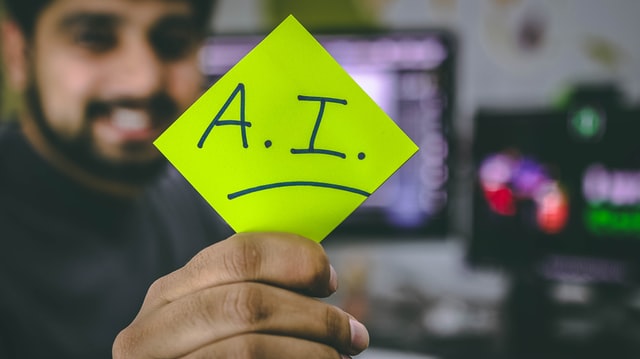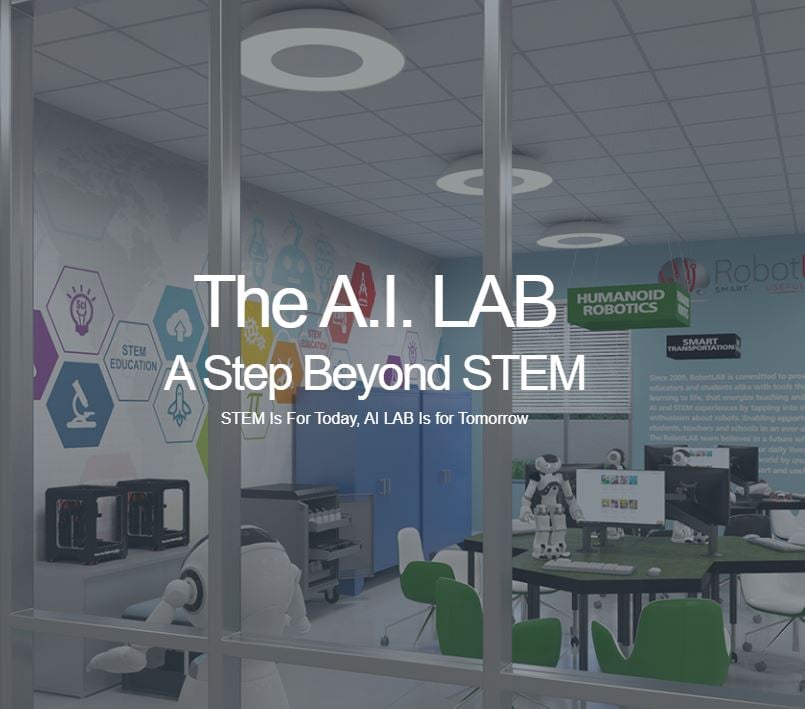 Image: Hitesh Choudhary unsplash : https://unsplash.com/
Image: Hitesh Choudhary unsplash : https://unsplash.com/
Artificial intelligence has taken the world around us by storm, and like all things in the 21st century, it has thoroughly impacted the education sector.
From chatbots to automated thermostat conditioning, the machines around us learn from our behavior and then act intelligently to deliver the best possible service or product.
Almost every industry out there is leveraging the power of AI. How, then, can education not be impacted by something so all-consuming.
AI has changed the delivery, approach, and stylization of the education sector around the globe with relevant innovation. Here is how we see the industry evolve and grow, owing to AI.
The Impact of AI on the Education Sector
For years the education sector and the general realm of it were unchanged. Schools delivered traditional education with the help of teachers who spoke to the students and utilized charts and diagrams to demonstrate concepts and principles.
With the evolution of technology, this otherwise unaffected space has also finally begun to catch up. There are many things about the conventional education system that have changed. Let’s take a look.
1. Transformation of Classroom Spaces
For centuries, traditional classrooms have been a teacher who delivers, and one or more students who attempt to absorb as much as they can.
Today, there are many online sites, web apps, and mobile apps that have transformed traditional classrooms into virtual classrooms. The virtual classes are designed to educate students one at a time based on their learning style, interest, and knowledge of a given subject.
Not only has AI personalized the classrooms, but it also allowed educational efforts to reach corners of the world, without affecting the quality of delivery.
2. Curriculum Designing
Something truly unique AI has to offer is the personalization. Artificial intelligence allows customization on a profoundly personal level as a machine learns the behavior patterns, preferences, and desires of an individual.
Students who are in the early years of their schooling, or those studying on graduate or higher levels can benefit from the personalization of AI. They can undertake personalized courses online, appear for tests, and track their performance right on their smartphones.
Institutions can design personalized courses based on the needs of students with the help of AI. It ensures the efficient delivery of educational services to every student and serves the ultimate goal: better education for all.
3. Better Grading
Grading and examinations have always received as much criticism as they have received fear from students preparing for a test.
Grades can decide the fate of a student and thereby design the life they live. That’s why their accuracy and efficiency are critical. However, for an incredibly long time, the process of grading has been subject to human errors.
AI resolves this problem as it can conduct examinations and help in assessing the knowledge of a given candidate efficiently.
What’s more useful is that AI can also help educational institutes to evaluate the delivery of education. It can analyze how well a student receives a particular format based on their performance in the tests.
Human error and subjectivity are entirely neglected as we reach a point where assessments are mechanized and conducted using well-formed AI platforms and servers.
In such a system with significantly less room for error, we can be confident of creating a much better future for the current generation of students.
4. Automation
While driving an automatic car, you don’t worry about having to switch gears every time you hit the brakes in traffic. Compare that to driving a manual in heavy traffic on Monday morning. You already know you don’t want the latter. And why not, if you have the comfort and ease of automation?
Automation in the education sector, thanks to AI, brings convenience and speed to teaching and assessment processes. AI allows students to receive knowledge at their own pace and participate in tests. AI-enabled learning environments can assess each student and without anyone’s intervention or assistance.
Automation can increase the speed of grading papers, checking examination sheets, and other related tasks. The task that used to take several months can be performed within a week.
This automation can save human beings precious time, not to mention endless stress.
5. Easy Implementation of Administrative Tasks
Administrative tasks are generally dull, and there’s an excellent opportunity to automate these mundane tasks with AI.
No one wants to be the one performing the same tasks over and over again. AI can solve this problem by being the non-complaining assistance that we need for tedious data handling and administrative tasks that are subject to human errors, and likely to be affected by lethargy and boredom as a consequence.
AI makes it easier to file paperwork, check the validity and authenticity of documents, ensure completion of paperwork from the comfort of one’s living room, all at a significantly faster pace. It leaves us much more time and several other resources to spare for some actual learning.
These were some of the many benefits of AI in the education sector. Let’s take a look at the future of the education sector when AI takes it over.
The Future of AI in Education
Trained machines with human-like intelligence can impact our lives in truly tangible ways.
Here are some of the changes that we are expecting in the future, which will be a clear indication of the same.
1. Predicting Student’s Performance in the Future
When students start using AI-enabled learning platforms, it’s going to generate a lot of data. This data would help institutions to understand how well a student is doing in the curriculum and how much time he/she is taking to pick up a specific concept.
AI-powered machines can adequately predict the kind of performance that can be expected from a student by observing the patterns of their performance, the time spent on a concept or topic, and then the results of tests and assignments.
It can also help track the actual progress of the machine learning algorithm used for the purpose and the efficiency of AI platforms. The graphs of a student’s development, as well as that of the AI algorithm, can be compared, and then adequate tweaking can allow improvement in the performance of both.
2. Discovering Gaps in Teaching Techniques
Many little things can be observed when every small bit of data is stored in the computer.
How well a student performs at specific kinds of problems, or how well they take to certain subjects can be noted easily, as well as the exact point when a student was confused or unclear regarding a concept can also be spotted.
When several students stuck on a specific point of a curriculum, it becomes an observable trend. This can lead teachers or institutions to the precise spot where a particular technique of teaching, is inefficient in delivering complex topics.
By identifying these gaps in teaching techniques, institutions can make adjustments to their teaching process, which would not be possible in the traditional chalk and talk system.
3. Experiential Learning for Students through VR and Games
All human beings, and children more than adults, are capable of understanding things much better they have the first-hand experience of things. It is also easier to retain the acquired knowledge when they are a participant in a specific experience, such as a quiz game.
You could tell a student how exactly methane gas is released within a specific reaction, or you could have them perform the exact experiment so they can observe and experience the physical and chemical changes in real-time. You already know which method is going to be more productive.
Using Virtual Reality for such an experiment can provide physical safety. A VR headset can conduct many basic and complex operations in a short period from within the safety of one’s house.
Video games are even more interesting for children and adults alike, which is quite evident from the size of the gaming industry. Those who aren’t invested in the realm might not know, but video games often get their players gripped with exciting storylines that delve into intricate emotions and moral issues.
This can be a great place to educate students about the subjectivity of emotions and morals, as well as instill sensitivity in them for other fundamental human skills.
4. Collaborative Learning for Multiple Students
Learning styles vary from student to student. While some perform better studying by themselves, others benefit from being among peers and engaging with them.
By understanding the learning style of individual students, AI-based tutors can identify which students can do much better when it comes to learning alongside others.
This information can further help customize learning as per the needs and learning styles of students to arrive at collaborative learning eventually. This means students can interact with each other in real-time, and partner for projects or assignments.
This is great for students who can benefit from interaction with others for personality development, or require socialization. AI can not only educate them in terms of the curriculum as a result but also help them when it comes to interactions with other people.
5. Smart Classrooms and Schools
We have seen classrooms get smarter in recent times with the use of modules and projectors. However, there is much more than can be done to make buildings smarter.
By leveraging the Internet of Things, or IoT, we can build school complexes and universities that have controlled thermostats, lights, fans, bells and alarms, and much more.
With buildings that are better designed and thereby safer for students, the experience of school is greatly enhanced while the management of resources becomes much easier as well.
Innovation and adaptation have already brought us much farther than we could ever anticipate. As we progress and further ride on uncharted territories, there are many more ways in which AI will affect education.
Discover more AI solutions with RobotLAB!



